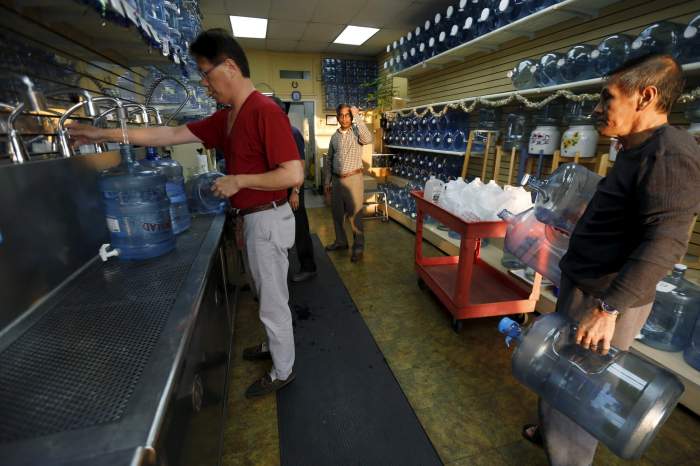By Valerie Volcovici
(Reuters) – The U.S. Environmental Protection Agency said on Thursday it plans to control a group of toxic chemicals found in Americans’ drinking water but stopped short of setting limits until later this year.
Acting EPA Administrator Andrew Wheeler on Thursday said the agency planned short- and long-term steps to help states exposed to a class of common chemicals called PFAS, used in Teflon and firefighting foam.
“We are moving forward with several important actions, including the maximum contaminant level process, that will help affected communities better monitor, detect, and address PFAS,” Wheeler said.
The agency did not give a maximum contaminant level, a legal limit allowed in drinking water under the Safe Drinking Water Act, for PFAS, but said it would start that process by the end of the year.
Environmental groups and politicians immediately accused the EPA of dragging its feet on setting limits.
“While the agency fumbles with this ‘mis-management plan,’ millions of people will be exposed to highly toxic PFAS from drinking contaminated water,” said Erik Olson, Senior Director for Health and Food at the Natural Resources Defense Council.
The chemicals have been used for decades in common products and have contaminated water systems, most recently in areas around army bases in states including Pennsylvania, Michigan and West Virginia where foam containing the chemicals is used in military exercises.
The chemicals are linked to cancer, liver and thyroid damage, and other health and fetal effects. Both Republican and Democratic lawmakers in certain states have expressed alarm over exposure to the chemicals.
A draft study released last year by an agency of the Department of Health and Human Services found that the risk level for exposure to PFAS should be at least seven to 10 times lower than the threshold recommended by the EPA. The White House and the EPA had tried to keep the report from publication.
Betsy Southerland, who resigned as a director in the EPA’s Office of Water in 2017 over disagreements with the Trump administration, said Thursday’s announcement did not include cleanup guidelines, which were due last fall.
“It’s sort of like the movie Groundhog Day. We are back to where we were in 2018,” she said.
Wheeler denied the EPA had slowed down developing the new plan, and said it was the most comprehensive cross-agency plan ever undertaken by the EPA to address an emerging chemical of concern.
He said the agency had begun the regulatory process to list PFAS chemicals PFOA and PFOS as hazardous substances and will issue interim groundwater cleanup recommendations for contaminated sites.
The agency will also monitor PFAS in nationwide drinking water and consider PFAS chemicals for listing in the Toxics Release Inventory to help the agency identify where the chemicals are being released.
Republican chair of the Senate Environment and Public Works Committee John Barrasso said on Thursday that the panel will hold a hearing on the EPA plan this spring.
“The Environmental Protection Agency’s PFAS plan is only a first step. As I have said before, EPA must speak clearly about the risk that this class of chemicals poses to public health and the environment,” Barrasso said.
(Reporting by Valerie Volcovici; Editing by Chizu Nomiyama and Susan Thomas)

















